北师大版(2019) 必修一 Unit 1 Life Choices lesson 1 Lifestyles 时态讲解课件((30张ppt)
文档属性
| 名称 | 北师大版(2019) 必修一 Unit 1 Life Choices lesson 1 Lifestyles 时态讲解课件((30张ppt) | 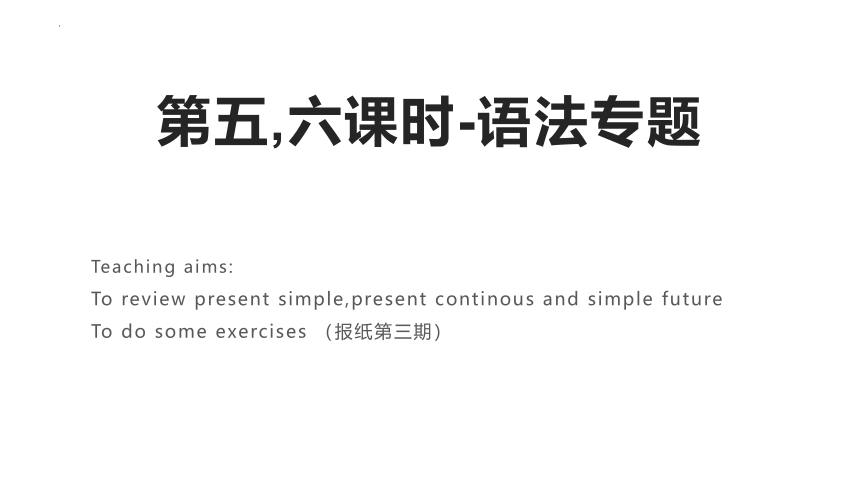 | |
| 格式 | pptx | ||
| 文件大小 | 695.8KB | ||
| 资源类型 | 教案 | ||
| 版本资源 | 北师大版(2019) | ||
| 科目 | 英语 | ||
| 更新时间 | 2022-12-13 18:16:41 | ||
图片预览

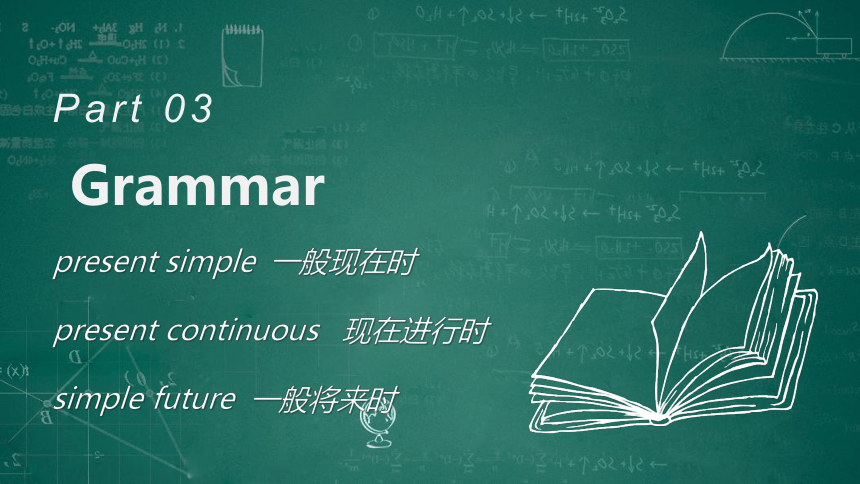
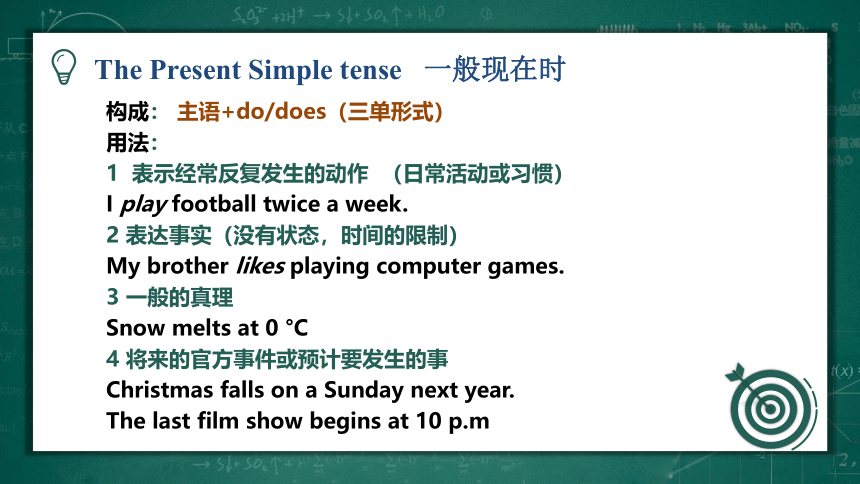
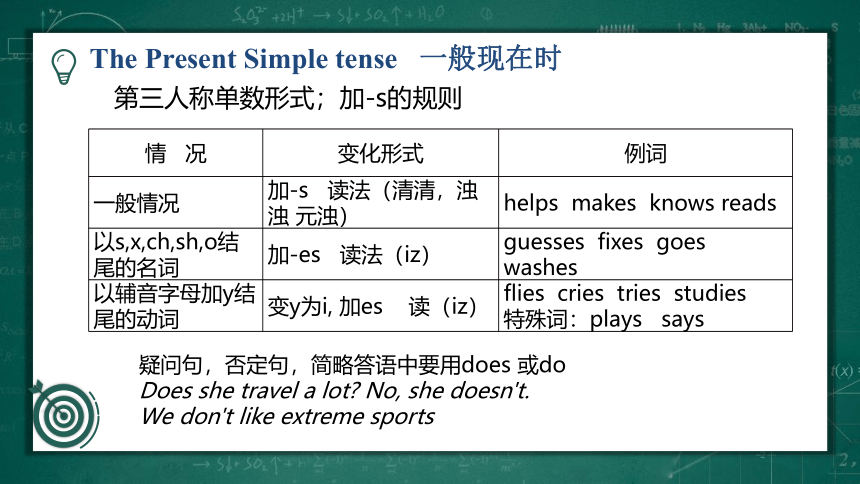
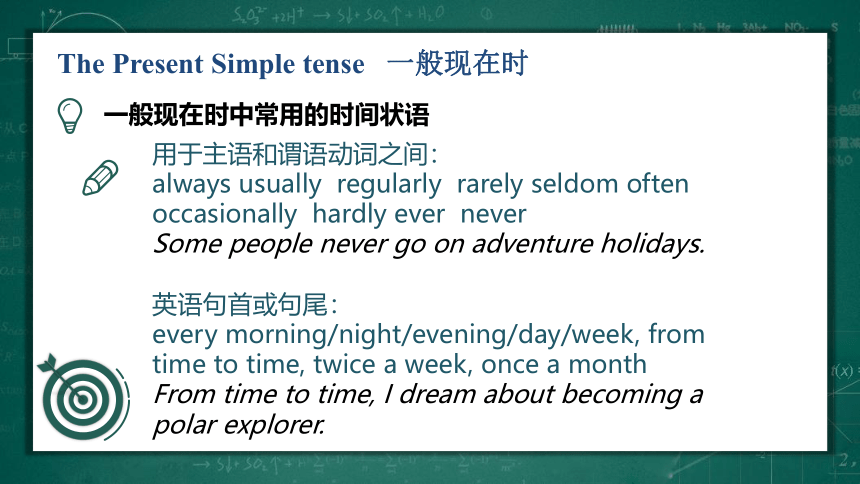
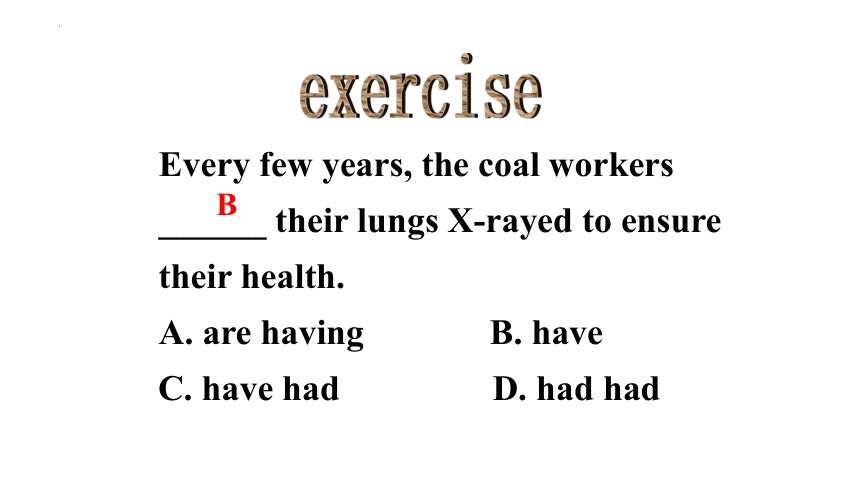
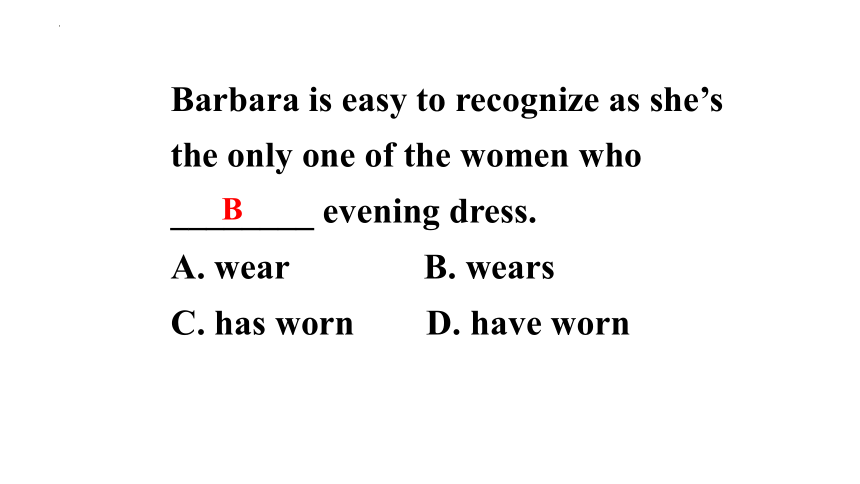
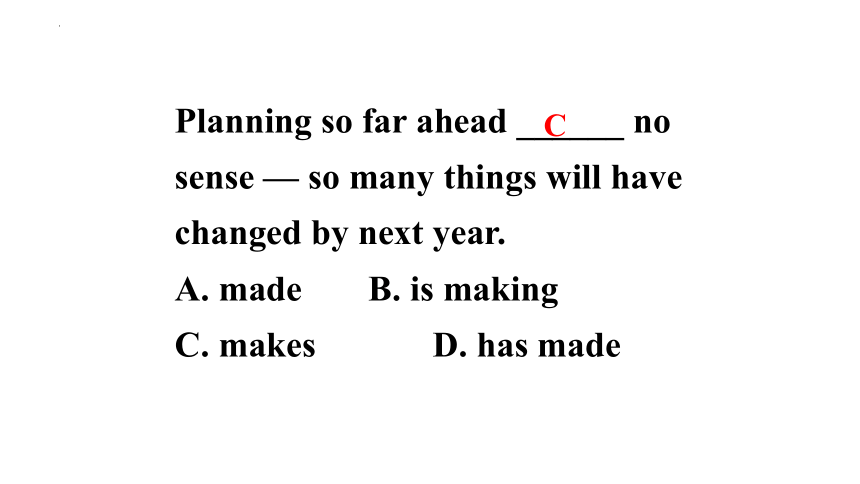
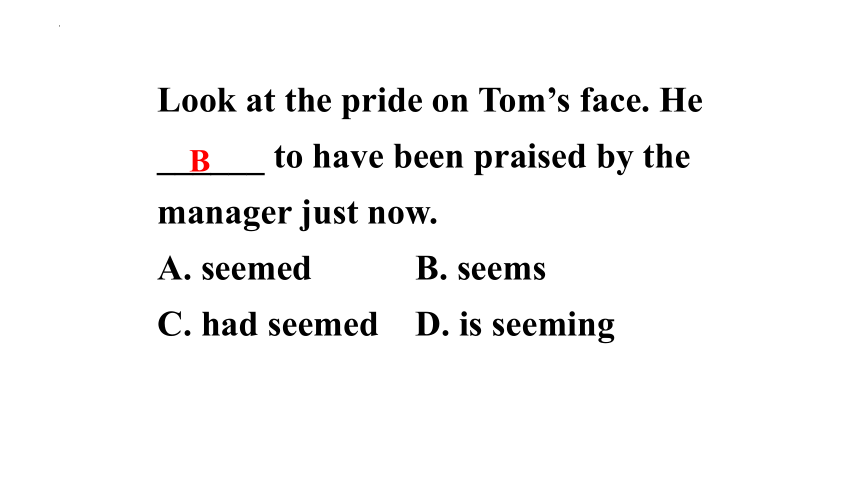
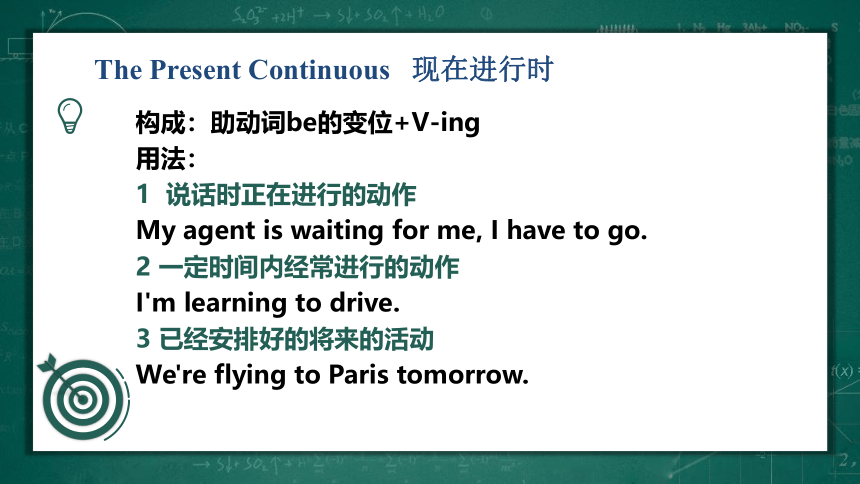
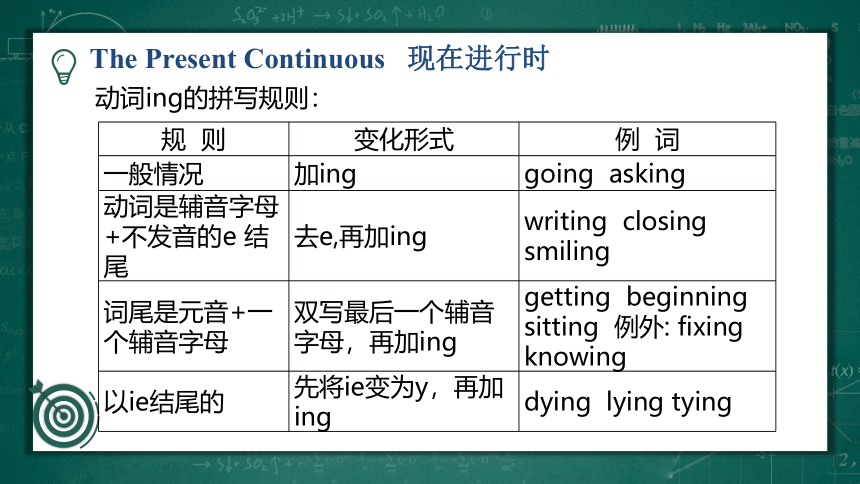
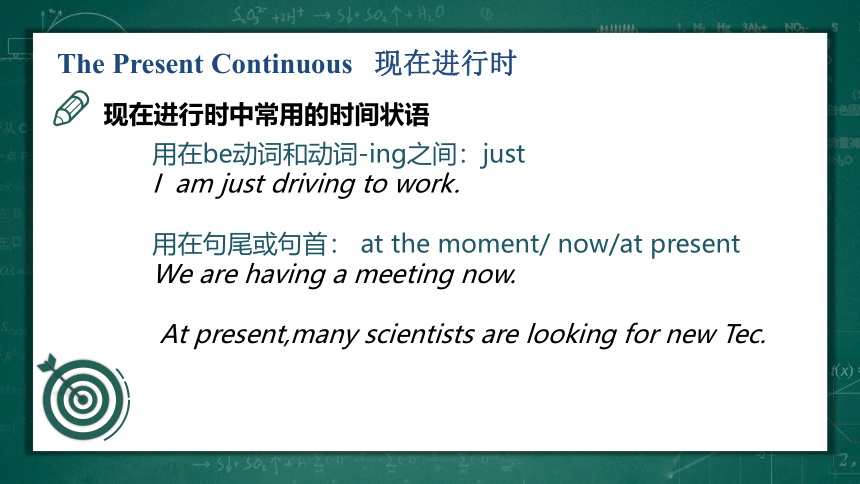
文档简介
(共30张PPT)
第五,六课时-语法专题
Teaching aims:
To review present simple,present continous and simple future
To do some exercises (报纸第三期)
Grammar
Part 03
present simple 一般现在时
present continuous 现在进行时
simple future 一般将来时
构成: 主语+do/does(三单形式)
用法:
1 表示经常反复发生的动作 (日常活动或习惯)
I play football twice a week.
2 表达事实(没有状态,时间的限制)
My brother likes playing computer games.
3 一般的真理
Snow melts at 0 °C
4 将来的官方事件或预计要发生的事
Christmas falls on a Sunday next year.
The last film show begins at 10 p.m
The Present Simple tense 一般现在时
The Present Simple tense 一般现在时
第三人称单数形式;加-s的规则
情 况 变化形式 例词
一般情况 加-s 读法(清清,浊浊 元浊) helps makes knows reads
以s,x,ch,sh,o结尾的名词 加-es 读法(iz) guesses fixes goes washes
以辅音字母加y结尾的动词 变y为i, 加es 读(iz) flies cries tries studies
特殊词:plays says
疑问句,否定句,简略答语中要用does 或do
Does she travel a lot No, she doesn't.
We don't like extreme sports
一般现在时中常用的时间状语
用于主语和谓语动词之间:
always usually regularly rarely seldom often occasionally hardly ever never
Some people never go on adventure holidays.
英语句首或句尾:
every morning/night/evening/day/week, from time to time, twice a week, once a month
From time to time, I dream about becoming a polar explorer.
The Present Simple tense 一般现在时
Every few years, the coal workers
______ their lungs X-rayed to ensure
their health.
A. are having B. have
C. have had D. had had
B
exercise
Barbara is easy to recognize as she’s
the only one of the women who
________ evening dress.
A. wear B. wears
C. has worn D. have worn
B
Planning so far ahead ______ no sense — so many things will have changed by next year.
A. made B. is making
C. makes D. has made
C
Look at the pride on Tom’s face. He ______ to have been praised by the manager just now.
A. seemed B. seems
C. had seemed D. is seeming
B
The Present Continuous 现在进行时
构成:助动词be的变位+V-ing
用法:
1 说话时正在进行的动作
My agent is waiting for me, I have to go.
2 一定时间内经常进行的动作
I'm learning to drive.
3 已经安排好的将来的活动
We're flying to Paris tomorrow.
The Present Continuous 现在进行时
动词ing的拼写规则:
规 则 变化形式 例 词
一般情况 加ing going asking
动词是辅音字母+不发音的e 结尾 去e,再加ing writing closing smiling
词尾是元音+一个辅音字母 双写最后一个辅音字母,再加ing getting beginning sitting 例外: fixing knowing
以ie结尾的 先将ie变为y,再加ing dying lying tying
现在进行时中常用的时间状语
用在be动词和动词-ing之间:just
I am just driving to work.
用在句尾或句首: at the moment/ now/at present
We are having a meeting now.
At present,many scientists are looking for new Tec.
The Present Continuous 现在进行时
不用于进行时态的动词-(状态动词)
表示知道,了解:
believe doubt forget imagine know remember realise suppose understand
表示看起来,看上去 :appear resemble seem
表示喜爱或不喜爱: hate like love prefer
表示感官的动词:hear see smell taste
表示构成或来源:be come from contain include
表示拥有:belong to need own possess want wish
The Present Continuous 现在进行时
--I'm not finished with my dinner yet.
--But our friends ______ for us.
A. will wait B. wait
C. have waited D. are waiting
D
exercise
That piece of music sounds quite familiar. Who _______ the piano upstairs
A. has played B. played
C. plays D. is playing
D
Ladies and gentlemen, please turn
off your cell phones. The plane _____.
A. takes off B. is taking off
C. has taken off D. took off
B
构成: 主语+will/shall+do
特殊构成: be going to +do
be to+do
be about to do
现在进行时表将来
一般现在时表将来
用法:
1 表示将来某个时间点将要发生的动作
The sun will rise tomorrow.
The Simple future tense 一般将来时
一般将来时中常用的时间状语
tomorrow next week/month/weekend/year
in +一段时间
I will go to school tomorrow morning.
We will go to a college in three years.
The Simple future tense 一般将来时
一“be going to”的用法
1. “be going to + 动词原形”结构用来表示
按照主观意图打算或按计划、安排将
要做的事, 有“打算、将要”的意思。
e.g. What are you going to do tomorrow
The play is going to be performed
next month.
2. 用于表示从迹象上表明将要发生的事
情。
e.g. Look at the clouds. It’s going to rain.
比较:
be + 不定式表将来, 表示按计划或正式安排将发生的事。
e.g. We are to discuss the report next
Saturday.
be about to + 动词原形, 表示即将发生的动作。
e.g. He is about to leave for Beijing.
注意:
be about to不能与tomorrow, next
week等表示明确将来时间的状语连用。
二、现在进行时表示将来
现在进行时表示将来, 常有“意图、安排或打算”的含义。常用动词有: arrive, come, do, go, have, leave, meet, play, return, start, stay, wear, work 等。
e.g. I’m leaving for Beijing this Sunday.
Where are you going
The teacher is meeting you after class.
三、一般现在时表示将来
1. 动词come, go, arrive, leave, start, begin, return等可以用一般现在时表将来。在口语中, 用来表示在时间上已确定或安排好的事情, 通常都有一个表示未来的时间状语。
e.g. The plane takes off at 9:20 am.
2. 表示客观性很强的将来。
e.g. Today is Friday, so tomorrow is Saturday.
注意: 有时说话者对某一事实非常肯定,
也用一般现在时。
e.g. The future is bright.
Final victory is ours.
3. 在由if, unless, when, until, till, as soon
as, before, after等引导的时间或条件状
语从句中, 须用一般现在时表示将来。
e.g. When Bill comes, ask him to wait for me.
I’ll write to you as soon as I arrive there.
注意:
如果if, when等引导的是宾语从句则需要使用一般将来时。
e.g. I don’t know if you will meet John at
the party.
4. 宾语从句作hope, make sure, suppose
等表希望、 猜测、认为等动词的宾语
时,也可用现在时代替将来时。
e.g. I hope they have a nice time next week.
Make sure that the windows are
closed before you leave the room.
1. If you plant watermelon seeds in
the spring, you ______ fresh
watermelon in the fall.
A. eat B. would eat
C. have eaten D. will be eating
D
2. In the near future, more advances in
the robot technology ______ by science.
A. are making B. are made
C. will make D. will be made
D
Homework
1 三维设计P20-24
第五,六课时-语法专题
Teaching aims:
To review present simple,present continous and simple future
To do some exercises (报纸第三期)
Grammar
Part 03
present simple 一般现在时
present continuous 现在进行时
simple future 一般将来时
构成: 主语+do/does(三单形式)
用法:
1 表示经常反复发生的动作 (日常活动或习惯)
I play football twice a week.
2 表达事实(没有状态,时间的限制)
My brother likes playing computer games.
3 一般的真理
Snow melts at 0 °C
4 将来的官方事件或预计要发生的事
Christmas falls on a Sunday next year.
The last film show begins at 10 p.m
The Present Simple tense 一般现在时
The Present Simple tense 一般现在时
第三人称单数形式;加-s的规则
情 况 变化形式 例词
一般情况 加-s 读法(清清,浊浊 元浊) helps makes knows reads
以s,x,ch,sh,o结尾的名词 加-es 读法(iz) guesses fixes goes washes
以辅音字母加y结尾的动词 变y为i, 加es 读(iz) flies cries tries studies
特殊词:plays says
疑问句,否定句,简略答语中要用does 或do
Does she travel a lot No, she doesn't.
We don't like extreme sports
一般现在时中常用的时间状语
用于主语和谓语动词之间:
always usually regularly rarely seldom often occasionally hardly ever never
Some people never go on adventure holidays.
英语句首或句尾:
every morning/night/evening/day/week, from time to time, twice a week, once a month
From time to time, I dream about becoming a polar explorer.
The Present Simple tense 一般现在时
Every few years, the coal workers
______ their lungs X-rayed to ensure
their health.
A. are having B. have
C. have had D. had had
B
exercise
Barbara is easy to recognize as she’s
the only one of the women who
________ evening dress.
A. wear B. wears
C. has worn D. have worn
B
Planning so far ahead ______ no sense — so many things will have changed by next year.
A. made B. is making
C. makes D. has made
C
Look at the pride on Tom’s face. He ______ to have been praised by the manager just now.
A. seemed B. seems
C. had seemed D. is seeming
B
The Present Continuous 现在进行时
构成:助动词be的变位+V-ing
用法:
1 说话时正在进行的动作
My agent is waiting for me, I have to go.
2 一定时间内经常进行的动作
I'm learning to drive.
3 已经安排好的将来的活动
We're flying to Paris tomorrow.
The Present Continuous 现在进行时
动词ing的拼写规则:
规 则 变化形式 例 词
一般情况 加ing going asking
动词是辅音字母+不发音的e 结尾 去e,再加ing writing closing smiling
词尾是元音+一个辅音字母 双写最后一个辅音字母,再加ing getting beginning sitting 例外: fixing knowing
以ie结尾的 先将ie变为y,再加ing dying lying tying
现在进行时中常用的时间状语
用在be动词和动词-ing之间:just
I am just driving to work.
用在句尾或句首: at the moment/ now/at present
We are having a meeting now.
At present,many scientists are looking for new Tec.
The Present Continuous 现在进行时
不用于进行时态的动词-(状态动词)
表示知道,了解:
believe doubt forget imagine know remember realise suppose understand
表示看起来,看上去 :appear resemble seem
表示喜爱或不喜爱: hate like love prefer
表示感官的动词:hear see smell taste
表示构成或来源:be come from contain include
表示拥有:belong to need own possess want wish
The Present Continuous 现在进行时
--I'm not finished with my dinner yet.
--But our friends ______ for us.
A. will wait B. wait
C. have waited D. are waiting
D
exercise
That piece of music sounds quite familiar. Who _______ the piano upstairs
A. has played B. played
C. plays D. is playing
D
Ladies and gentlemen, please turn
off your cell phones. The plane _____.
A. takes off B. is taking off
C. has taken off D. took off
B
构成: 主语+will/shall+do
特殊构成: be going to +do
be to+do
be about to do
现在进行时表将来
一般现在时表将来
用法:
1 表示将来某个时间点将要发生的动作
The sun will rise tomorrow.
The Simple future tense 一般将来时
一般将来时中常用的时间状语
tomorrow next week/month/weekend/year
in +一段时间
I will go to school tomorrow morning.
We will go to a college in three years.
The Simple future tense 一般将来时
一“be going to”的用法
1. “be going to + 动词原形”结构用来表示
按照主观意图打算或按计划、安排将
要做的事, 有“打算、将要”的意思。
e.g. What are you going to do tomorrow
The play is going to be performed
next month.
2. 用于表示从迹象上表明将要发生的事
情。
e.g. Look at the clouds. It’s going to rain.
比较:
be + 不定式表将来, 表示按计划或正式安排将发生的事。
e.g. We are to discuss the report next
Saturday.
be about to + 动词原形, 表示即将发生的动作。
e.g. He is about to leave for Beijing.
注意:
be about to不能与tomorrow, next
week等表示明确将来时间的状语连用。
二、现在进行时表示将来
现在进行时表示将来, 常有“意图、安排或打算”的含义。常用动词有: arrive, come, do, go, have, leave, meet, play, return, start, stay, wear, work 等。
e.g. I’m leaving for Beijing this Sunday.
Where are you going
The teacher is meeting you after class.
三、一般现在时表示将来
1. 动词come, go, arrive, leave, start, begin, return等可以用一般现在时表将来。在口语中, 用来表示在时间上已确定或安排好的事情, 通常都有一个表示未来的时间状语。
e.g. The plane takes off at 9:20 am.
2. 表示客观性很强的将来。
e.g. Today is Friday, so tomorrow is Saturday.
注意: 有时说话者对某一事实非常肯定,
也用一般现在时。
e.g. The future is bright.
Final victory is ours.
3. 在由if, unless, when, until, till, as soon
as, before, after等引导的时间或条件状
语从句中, 须用一般现在时表示将来。
e.g. When Bill comes, ask him to wait for me.
I’ll write to you as soon as I arrive there.
注意:
如果if, when等引导的是宾语从句则需要使用一般将来时。
e.g. I don’t know if you will meet John at
the party.
4. 宾语从句作hope, make sure, suppose
等表希望、 猜测、认为等动词的宾语
时,也可用现在时代替将来时。
e.g. I hope they have a nice time next week.
Make sure that the windows are
closed before you leave the room.
1. If you plant watermelon seeds in
the spring, you ______ fresh
watermelon in the fall.
A. eat B. would eat
C. have eaten D. will be eating
D
2. In the near future, more advances in
the robot technology ______ by science.
A. are making B. are made
C. will make D. will be made
D
Homework
1 三维设计P20-24
同课章节目录
- Unit 1 Life Choices
- Lesson 1 Lifestyles
- Lesson 2 Understanding and Coping with Stress
- Lesson 3 Your Life Is What You Make It
- Unit 2 Sports and Fitness
- Lesson 1 The Underdog
- Lesson 2 Rules of the Game
- Lesson 3 Running and Fitness
- Unit 3 Celebrations
- Lesson 1 Spring Festival
- Lesson 2 Special Occasions
- Lesson 3 Memories of Christmas
